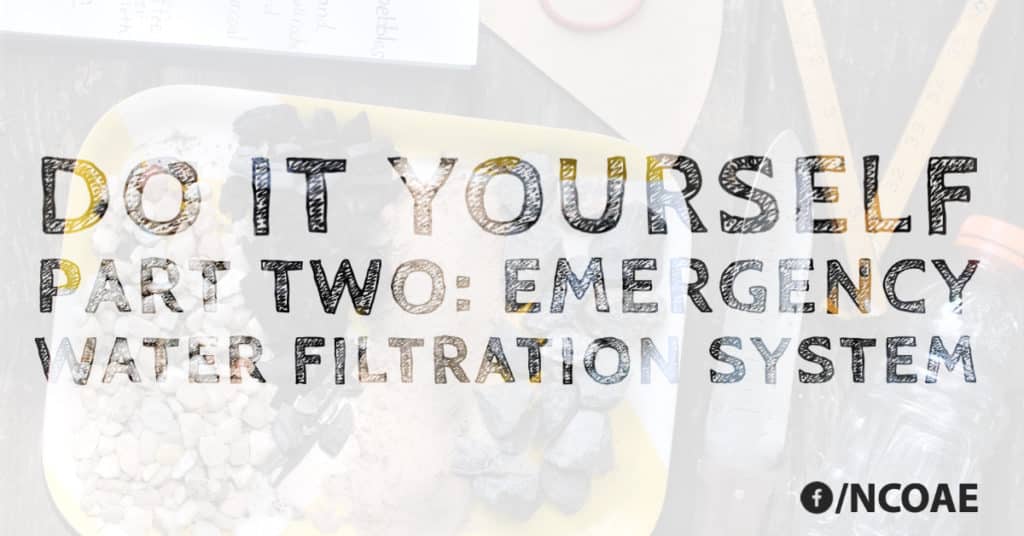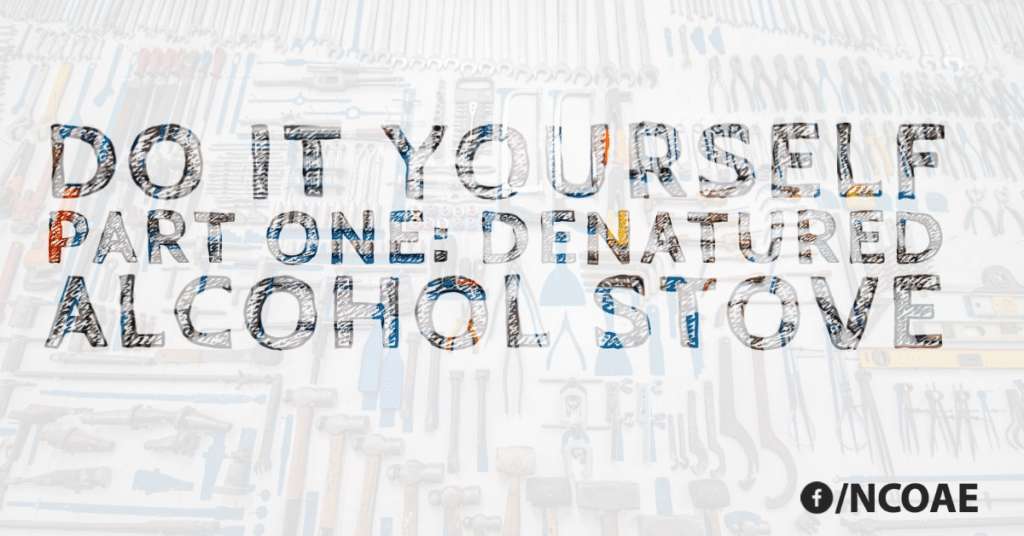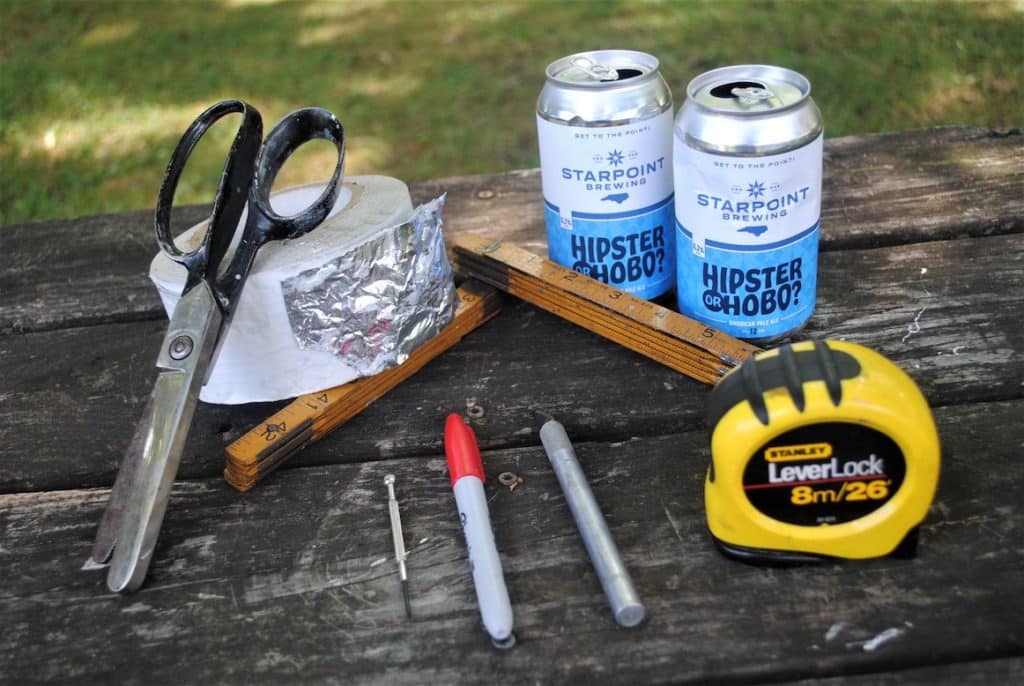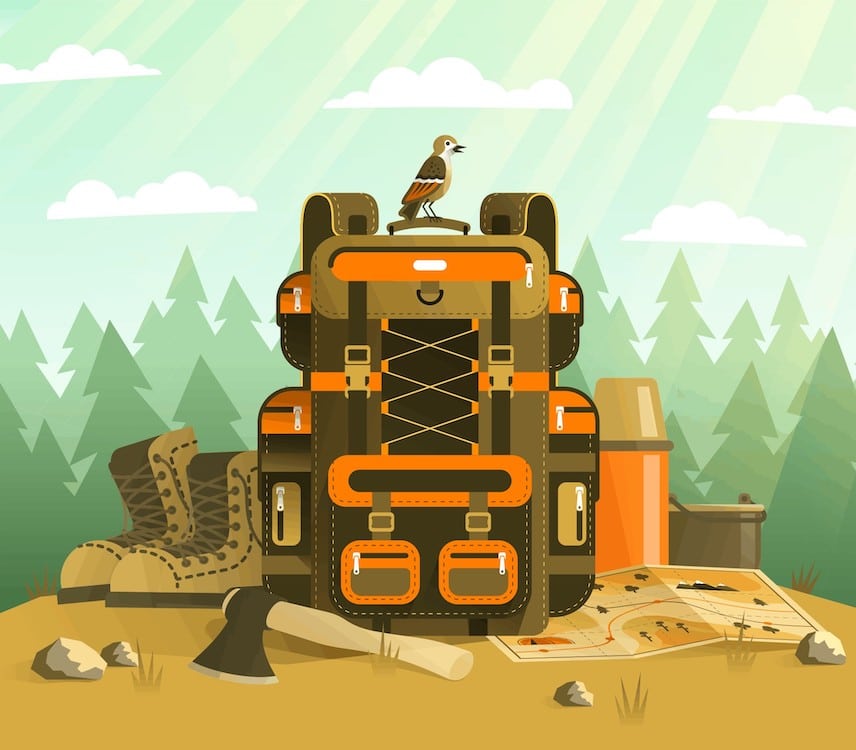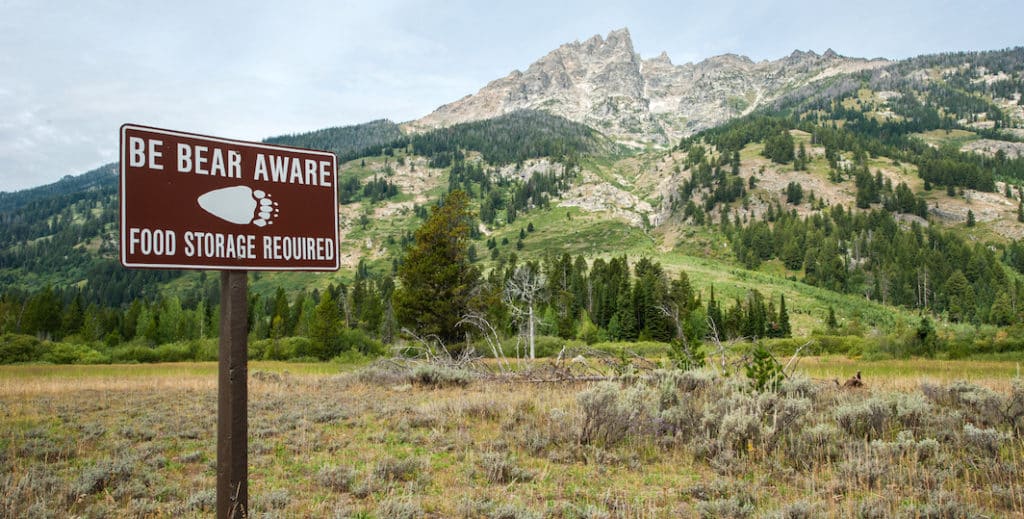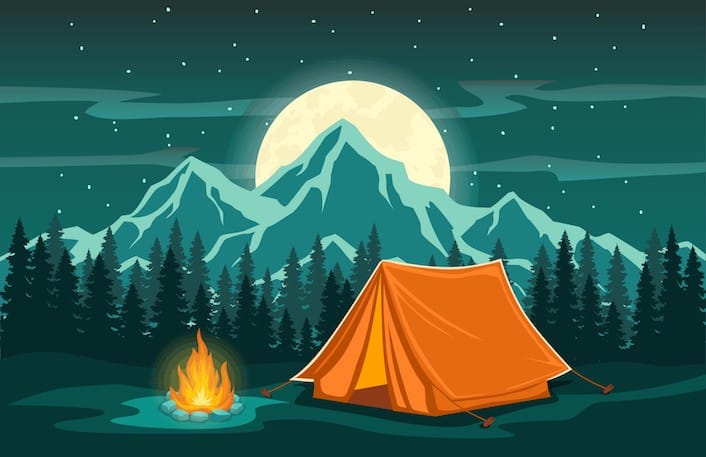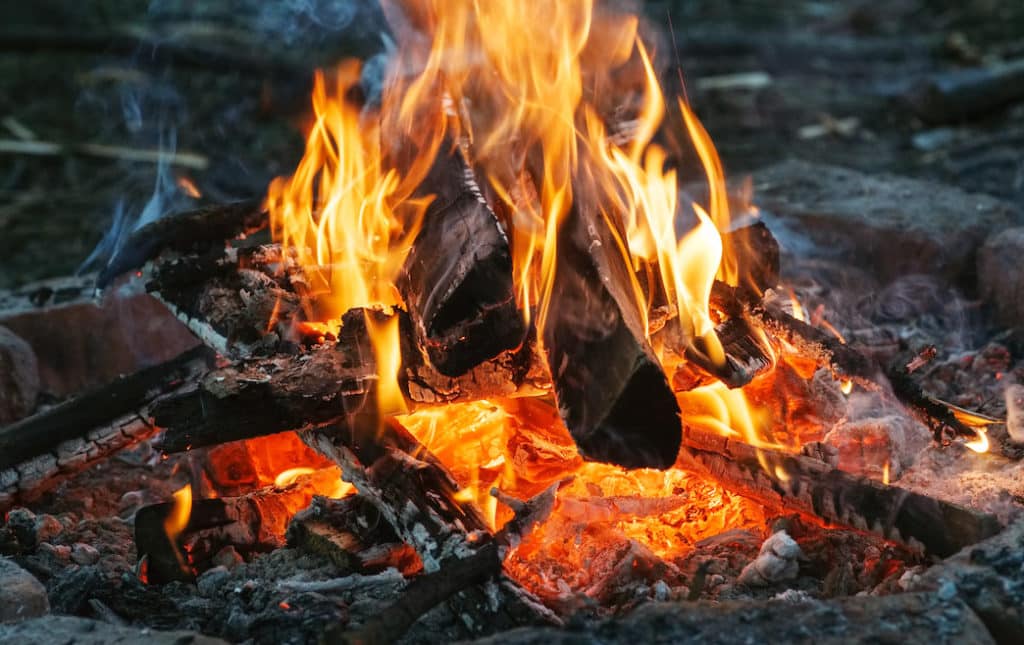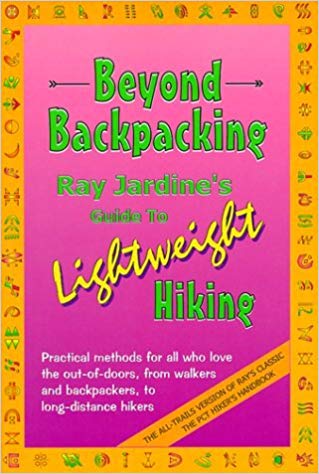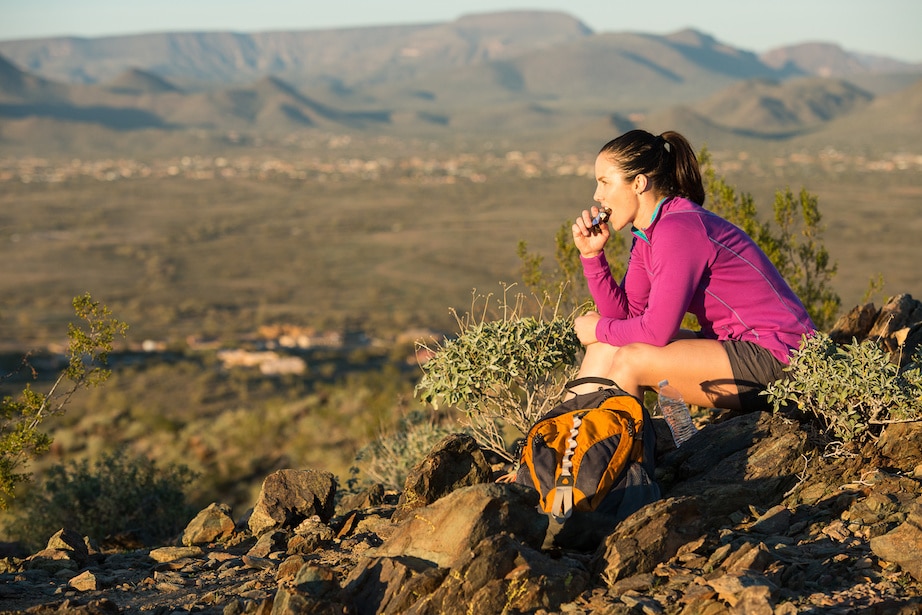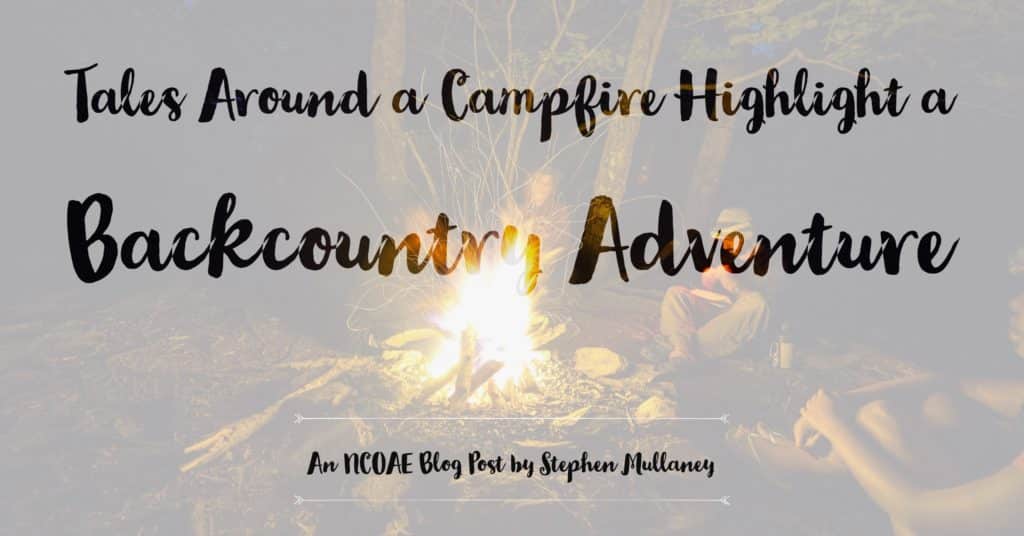Concussion Recognition and Treatment in the Backcountry
Wilderness Medicine TrainingConcussion recognition and treatment has gotten a lot of attention over the last decade, mostly in the context of youth and professional sports such as tackle football and soccer. It’s even a topic for those who serve in our armed forces. However, confusion over its prevention, diagnosis, and treatment remains widespread.
In an interview with a reporter from the Chicago Sun Times, former National Football League quarterback Brett Favre, who was knocked out cold only once in his 20-year career, claimed that “probably 90 percent” of the tackles he endured left him with a concussion.
He’s most likely correct in that estimation. After all, the definition of “concussion” is broad: “A concussion is a brain injury, a disturbance in brain function induced by traumatic forces, either from a direct blow to the head or a transmitted force from a blow to the body.” It disrupts brain function at the cellular metabolic level but does not result in major structural damage. Conventional MRI or CT scanning will not show evidence of a concussion.
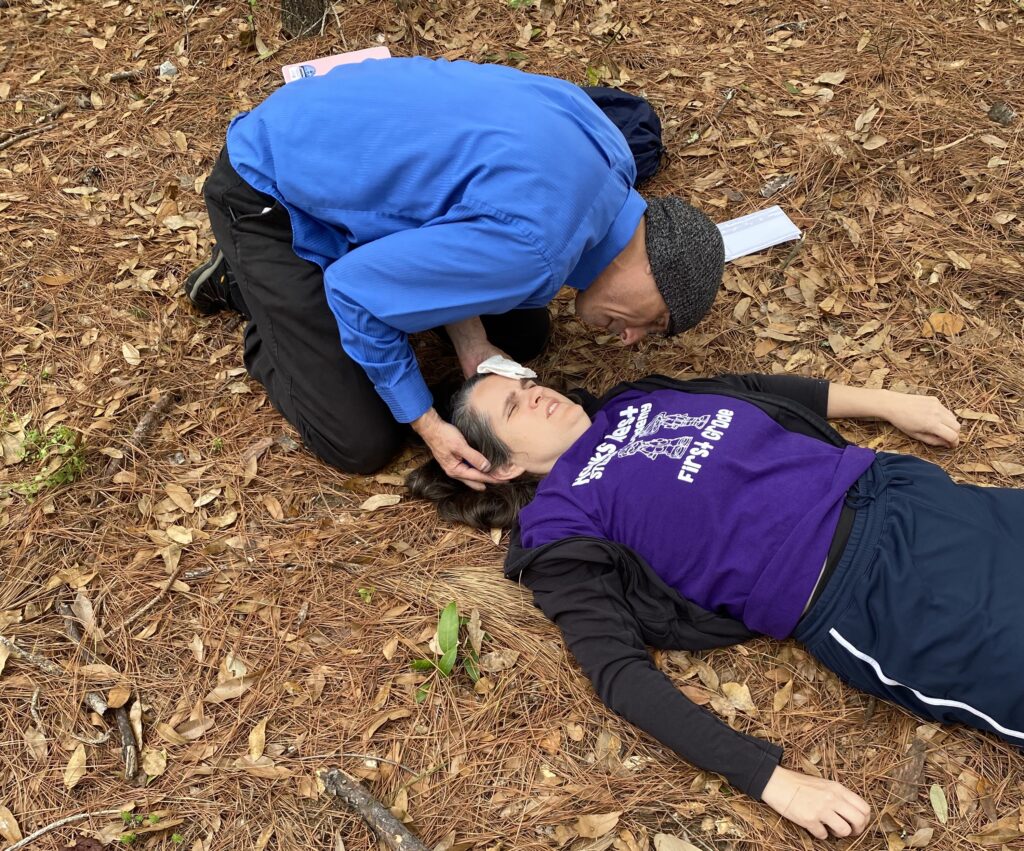
So, how do you know if you or someone else has suffered a concussion while in the backcountry? And, after having made that determination, what should be done? Having clear answers to these two questions is essential for successful recovery and to prevent long-term cognitive and psychological complications. This is true no matter where the concussion takes place, but especially in the backcountry where medical treatment from a full-time team is unavailable. (more…)
The Role of the Wilderness First Responder During Water Rescues
Wilderness Medicine TrainingIt may surprise you to learn that drownings — along with heart attacks and falls — are among the leading causes of death for those who venture into the wilderness for recreation or education in the United States.
Statistics show that there are nearly 4,000 fatal drownings each year in the United States, with a little more than 8,000 nonfatal drownings. These figures include boating-related drownings. In fact, the threat of drowning is so prevalent that the first edition of the NCOAE Wilderness Medicine Field Guide devotes an entire section to Environmental Submersion and Drowning Injury.
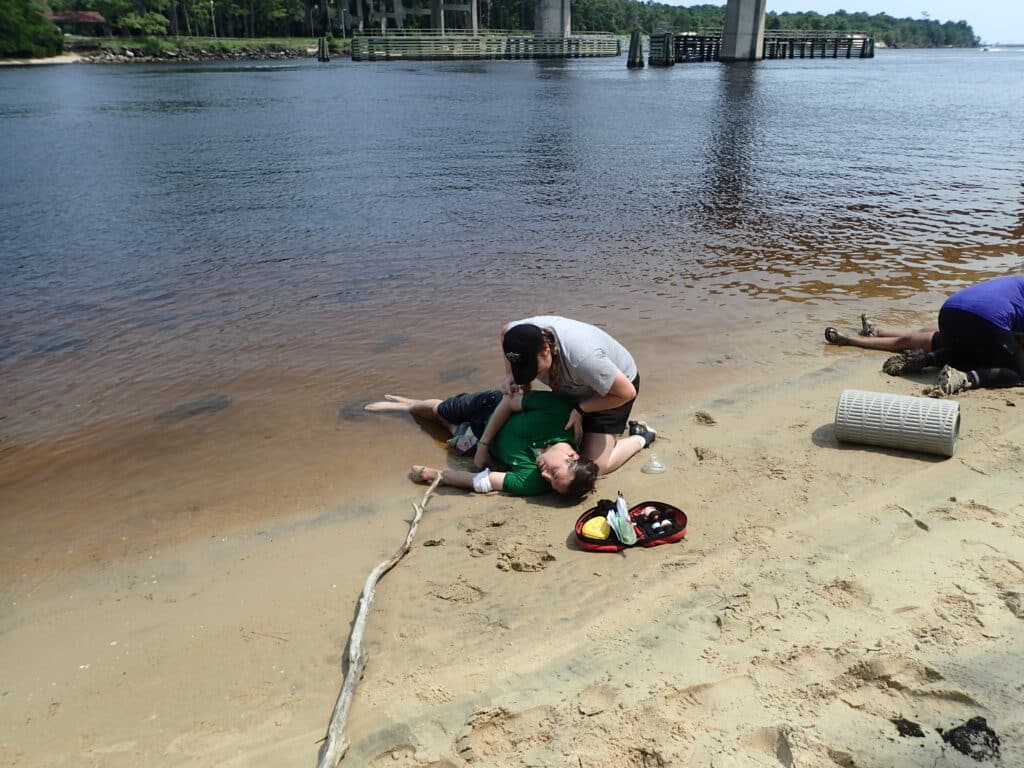
Of course, it’s during the spring and summer that most outdoor explorers are on the water, including those participating in backcountry expeditions. Lakes, rivers and streams provide much-needed relief in the backcountry on a hot August afternoon and are sought-after destinations for many outdoor enthusiasts.
For those training to become Wilderness First Responders (WFR) and those participating in Wilderness First Aid (WFA) training, a major consideration is assisting with medical emergencies that occur on or near the water. (more…)
Applying the Principles of ‘Leave No Trace’ to Daily Life in an Urban Setting
UncategorizedWhat is Leave No Trace?
The idea behind Leave No Trace is to embrace specific wilderness stewardship values in order to protect our backcountry areas for generations to come. Back in the early 1940s, Robert Baden-Powell, founder of the world Scouting movement, said, “Try and leave the world a little better than you found it.” Over time, this morphed into, “Always leave your campground cleaner than you found it.”
Fifty years later, in the early 1990s, that Leave No Trace concept was immortalized through an educational curriculum developed by the United States Forest Services in partnership with NOLS (the National Outdoor Leadership School). The outcome was an agreed framework for instilling awareness on the part of wilderness travelers to interact with nature in a manner that reduces human impact.
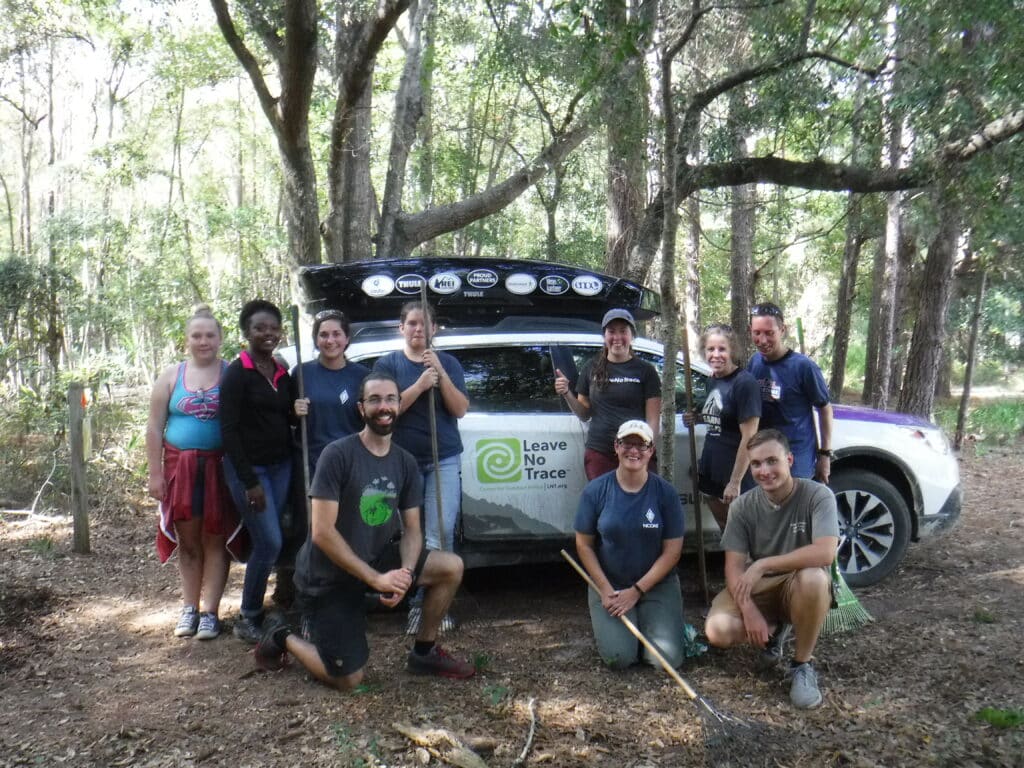
What is The Importance of Leave No Trace?
The idea behind Leave No Trace is to embrace specific wilderness stewardship values in order to protect our backcountry areas for generations to come. Today, that program — run by the Leave No Trace Center for Outdoor Ethics in Boulder, Colorado — impacts more than 15 million people in the United States and dozens of other countries with conservation initiatives, education, training, and research.
Baden-Powell’s simple sentiment more-or-less condenses the seven principles behind today’s Leave No Trace (LNT) program. The well-known LNT’s principles are: (more…)
DIY Part 3: Brewing Coffee in the Backcountry Like a Barista
Backcountry PrepWhat’s the only item in your gear closet that could possibly be more important than food, water, and shelter? For most of us the answer to that question is coffee! That complex nectar of the gods that makes us sharp in the morning and warm at night. And as the old saying goes, “Everyone should believe in something. I believe I will have another cup of coffee!”
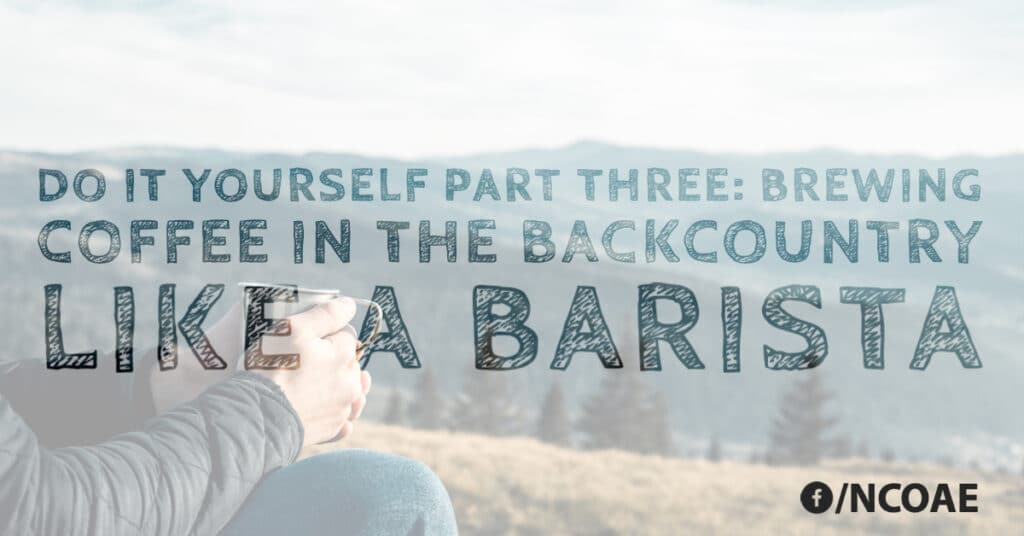
And, since brewing coffee is as much of a ritual as it is a necessity, you can imagine the amount of gear you’d need to stuff in your backpack in order to prepare the perfect cup of coffee in the wilderness. The question becomes, how do we get that great cup of coffee — using the best beans and blends we can find — without breaking the bank and our backs in the process?
In this, the third and final installment of Do-It-Yourself camping tips, we address the coffee snob within most of us, and share some interesting coffee-related quotes along the way.
Now make a face and say, “Instant coffee? Are you kidding me right now?”
COFFEE QUOTE NO. 1: “What goes best with a cup of coffee? Another cup.
Henry Rollins
So let’s get to it. We’ll teach you how to pack and prepare the best cup of coffee possible in the backcountry. And you’ll be able to perform this feat in five to seven minutes.
Heres’ what you’ll need:
(more…)DIY Part 2: Emergency Water Filtration System
Backcountry PrepWe’ve all seen those old Western movies where the hero is crawling on the desert floor with an empty canteen and a parched throat. None of us want to experience that torture. It’s bad enough watching the bad acting. Same goes for heading to the backcountry for a weeklong wilderness experience. Nobody wants to be caught short of fresh drinking water.
Here’s where the do-it-yourself approach to human-powered outdoor recreation really comes in handy. The stove we built in Part One of this three-part DYI series, can be seen as an inexpensive alternative to a store-bought stove, and as a tool to help us understand how camping stoves work. Because the more we are familiar with the inner workings of equipment, the more likely we’ll be able to solve challenging issues with that stove.
It’s a given. Your gear will fail you.
That being said, the water filter we’re building today falls more into the understanding of how filtration systems work. Again, if we comprehend how our equipment works, we can better take care of that gear and repair it when it reaches a point of failure. And, if you have spent a considerable amount of time traveling in wild places, you know that your gear is eventually going to fail.
First off, there are three tried and true methods of water purification — boil, filter (purify), and chemical treatment. (For more on this, read Stay Sharp in The Offseason By Following the Way of the Farmer, available here on the NCOAE Blog.)
The industry standard when traveling with groups on guided trips in the backcountry is the use of chemical treatment, typically Iodine. That’s because Iodine is inexpensive, easy to carry, and highly reliable. Many outdoors enthusiasts use a commercially available filter, life straw, or gravity feed system. Not surprising, many don’t know how they work or how to repair them in the backcountry. This lack of knowledge has cut short many a trip due to a water filtration failure.
Once, while traveling in Nepal with a group of students from NCOAE, I was almost forced into building a water filtration system like the one we describe below. One of the participants swore he was having a reaction to the chemical treatment. And, because the mental perception of one individual can affect the entire group, when water quality is in question, we need to overcome that obstacle. My thought was to create a filter system that would not only educate the students but keep everyone safe — whether that danger was perceived or not. Fortunately, it never came to that.
(more…)Do it Yourself Part One: Denatured Alcohol Stove
Backcountry PrepVisitors to our blog are going to react in one of two ways when they see an article with “Do it Yourself” in the headline. You’re either going to avert your eyes and try to find a less intimidating article. Or you’re going to greet this headline and subsequent instructions with enthusiasm and frenzied fervency.
Here’s hoping you’re among the second category of DYI folks who revel in the experience of creating things from scratch. You know, those Junior MacGyvers who’d rather spend a weekend creating a project than spend nine bucks for the same item at the store.
That’s why we’re dedicating the next three posts here on the NCOAE blog to help you find what we hope is the do-it-yourselfer deep in your soul. Here at The National Center for Outdoor Adventure and Education (NCOAE), we have always used the equation of Self + Community + Action = Impact. It’s the notion of making the changes necessary to feel better about yourself and see your role in a community of peers, practice, neighbors, or just society as a whole.
Through our outdoor education and wilderness medicine programs we have helped countless individuals and organizations — through interaction with nature and wild places — to move forward to a more conscious way of living life and perhaps influencing the world around them. Just look at the many companies that were born of DIY thinking. There’s Patagonia, Petzl, Outdoor Research, Swift Industries, Black Diamond, and pretty much everything related to the surf industry.
So, for this installment and the two that follow, we will be exploring the DIY experience of creating equipment destined for human-powered outdoor pursuits, either for fun or out of necessity. We find that DIY projects give you a taste of the experiential education process from the comfort of your own home or garage.
And Part One of this series is how to make a denatured alcohol stove.
Years ago, I made the beautiful mistake of buying “Beyond Backpacking” by Ray Jardine. The mistake? The book inspired me to begin purging my gear, make my own gear, and learn how to go light for less money. Gearing up for a huge trip inspired me to follow the “Ray Way.”
It was around that time that I built my first denatured alcohol stove. The process is straightforward and acquiring the materials can be a lot of fun. For instance, you’ll need to empty a couple of soda or beer cans before you even get started. Any beverage can will work, but some folks would prefer to drain a can of beer. Because building this stove is about the experience and the pursuit of learning. And, of course, the enjoyment.
(more…)Now’s the Time to Explode Your Backpack
Backcountry PrepMost successful outdoor retailers take monthly, quarterly, and/or an annual inventory of what they have in stock, what needs to be replaced, and what might need to be added to the store’s shelves. Items that sit ignored on the shelf or are no longer in fashion go in the “50% Off” bin or “sale” rack, enabling the retailer to make space for the newest and greatest products.
That practice of practical paring holds true for those of us who enjoy human-powered outdoor adventures and are, even now, preparing for the trails, climbs, and river rapids that we anticipate and dream about each winter.
And chief among those preparations is a thorough consideration of the current contents of our backpacks. The idea is simple: How do you lighten your load for your next adventure, feel less stressed when packing, and maybe offer free and still useful gear to a friend or local outdoor-based organization in need?
It’s time to “clean house.” And by that we mean pull your gear out and place it all on the ground, inspect it, and discard those items you can do without. In fact, here at The National Center for Outdoor & Adventure Education, we offer a number of courses that, among other things, show participants the ABCs of backpacking — which includes properly packing a backpack.
One important part of our courses is when participants “explode” their pack in front of their peers. Typically, the group circles up and (more…)
When Wildlife Interferes with Our Love of the “Wild Life”
Backcountry PrepEven if you’ve never participated in scouting, you probably know that “Be Prepared” is the Boy Scout Motto. It’s a maxim that still holds true for today’s outdoor enthusiasts — perhaps more so than back in 1908 when founder Robert Baden-Powell adopted it for the scouting movement.
Baden-Powell wrote that Boy Scouts in the field should consider beforehand, “any situation that might occur, so that you know the right thing to do at the right moment and are willing to do it.” He also oddly mentioned that the motto was founded on his initials (BP), but that’s neither here nor there.
The point is this. It has been estimated that more than 8 billion people visit protected “wild places” each year — areas that encompass national parks, national forests, and wildlife areas in the United States and around the world. What that means is more people are heading outdoors, which results in more people coming into direct contact with wildlife.
And that’s not always a good thing. As the signs illustrating this post show, more and more of us are introduced to the backcountry and wild places with posted warnings concerning the “fulltime residents” of these remote and natural areas.
On Cape Cod beaches, for example, there are (more…)
Sleeping Out: From Cowboy Camping to Luxury Tents, the Choice is Yours
Backcountry PrepFew things on Earth can match the unsurpassed contentment of sleeping outdoors. “If people sat outside and looked at the stars each night,” Bill Watterson once wrote, “I bet they’d live a lot differently.” Amen to that!
The stars above, the clouds floating by like sailing vessels, the trees whispering in the breeze. And, of course, there’s the mosquitos, the rain, the crawling critters, and Mother Nature. Like I said, nothing better, with the only caveat being what comes next.
If you want to sleep under the stars, you’re going to need a plan. And coming up with that plan entails understanding what types of shelters are out there and what fits your personal or group shelter profile. During this tour of common shelters, we look at the most basic/minimal shelters and work our way up to more complete shelters.
Let’s hit the trail!
Cowboy Style
Here’s how this one works: You get tired, you make a fire, and you fall asleep under the stars. That’s it. Welcome to ‘cowboy camping.’
Why cowboy? You wanted an experience in nature. This style of camping places you cheek-to-cheek with (more…)
Fire it Up: How to Plan for and Make a Campfire in the Backcountry
Backcountry PrepMost of us have caught at least an episode or two of “Survivor,” the original reality show that has cast members “outsmart, outlast and outwit” each other in order to win a million dollars at the end of 32 days in a wilderness environment.
Inevitably on this popular TV show, two finalists are forced to build a fire, with the winner moving on and the loser going to the jury. And you’d think after 38 seasons, that all contestants would find it advisable to practice building a fire with flint and kindling BEFORE arriving on that season’s desert island or jungle outpost. But they don’t.
What we’re going to do in this blog post, is show you how to plan for a campfire in the wilderness, what to bring, what to source onsite, and how to avoid setting your tents, sleeping bags — or the entire backcountry afire.
Fueling the Flames
Oh, and if you’ve never learned how to build a fire — or cooked over an open fire — you should. It’s an amazing, freeing experience. Here’s what you’ll need: (more…)
Lighten Up! Don’t Carry All That Weight into the Backcountry
Backcountry PrepSecure in my shelter and listening as the rain dances on my tarp, I pull out my alcohol stove and relax, waiting for the water to boil. Twenty-seven miles of hiking in one day — a personal distance record. It’s been a good day.
Reflecting back 20 years, I remember purchasing a first-edition copy of Ray Jardine’s “Beyond Backpacking,” a book that completely reshaped my thinking on how to pack for travel in the backcountry. It wasn’t that long ago that the philosophy of Wilderness travel was to get a big bag and fill it up. Since then, the mindset of “more is better” has changed.
Packing ultra-light — once considered the mantra of wild-eyed survivalists — has now become firmly embedded as a philosophy among those in the multibillion-dollar human-powered outdoor recreation industry.
In my own case, I have moved beyond packing light to achieve big miles, and more toward doing it just for the comfort. Carrying less weight is better on the body, mind — and pocketbook. That’s primarily because I now cover more ground in the backcountry, spend less money on costly gear, and I find it much easier to pack and unpack at the beginning and end of each day.
First things first: Get thyself to a bookstore and pick up a copy of “Beyond Backpacking.” Then read it. After that, break out your gear and (more…)
How and Why to Remove Junk Food from Your Backpack
Backcountry Prep“What’s fructose? What’s GMO? What do these words mean?
These are some of the questions my 9-year-old daughter asked me last June as the family shopped for good snacks for a backpacking trip. By July, my daughter had vowed to stop eating food with “junk” in it. And to date, she has kept her word.
Take a tour of your local grocery store, and peruse the list of ingredients on the back or side of the packaging of many of those so-called healthy snacks. You might be unpleasantly surprised to find that an abundance of these products tout themselves as containing all natural ingredients, when in actuality they contain just the opposite.
It’s a bad habit, but often when we shop for those “in-between foods” (between meals), we’ll grab up what looks good or is easy to pack. Or we find ourselves purchasing items out of habit or convenience. But the truth is on the trail:
Sugary, high-calorie snacks never translate into positive energy.
Time for Change
We’ve all experienced the benefits of using (more…)
Assessing Seasonal Gear Leads to a Trip Down Memory Lane
Backcountry PrepSpring has sprung and it’s the beginning of another fine season of outdoor adventure, which means it’s time to start unpacking, inspecting, cleaning up and then repacking your gear.
As you start pulling out the dusty Tupperware containers crammed with camping gear you’ve had since your first journey beyond the pavement, take some time to reflect. Revel in the moment as you remove each memory from the box. Think about where that tool or boot or piece of canvas has taken you, and the gifts you in turn received by being able to use that equipment with confidence.
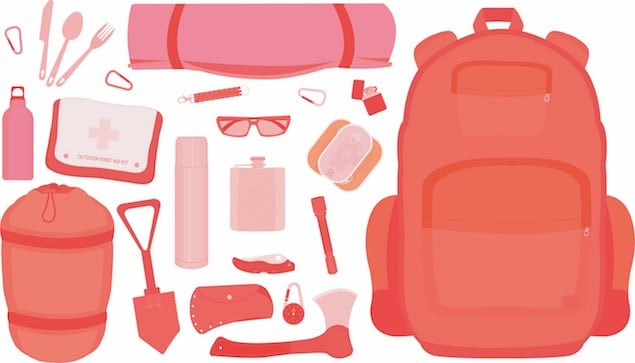
Dig deep and you’re likely to find a piece of gear that appears — to the uninformed — to be broken and unusable. But to you, a broken cam that you’ve had for years has meaning to it. In fact, you’re pretty much convinced that, in the event of an emergency, you could set that passive piece to save your butt.
As you’re reading this, one of you might be thinking about an unusual rock you and a buddy picked up on a particularly fantastic trip. It’s never left your bag. Maybe it reminds you of (more…)
Tales Told Around the Campfire Highlight a Backcountry Adventure
Backcountry PrepCrack, pop, pop, hiss. The campfire audibly confirms its presence as a contented audience sits around the pit, absently staring into the infinite colors created by the dancing flames.
When fire restrictions aren’t in place, campfires have always been a centerpiece for backcountry gatherings; a time and place where learning, cooking, impromptu singing, occasional horseplay and long descriptive stories punctuate comfortable stretches of silence.
But it’s the stories told around a campfire that are often among the most memorable portions of any wilderness outing — especially when one or more participants has some stories to tell and the ability to tell them well.
A few years ago I had the good fortune of leading a group of students on a trip that combined paddling, climbing and hiking. The weather was great for about 10 percent of the trip, which means the other 90 percent tested our resolve. As a result, our itinerary had to (more…)
Stay Sharp In The Offseason By Following the Way of the Farmer
Wilderness Cooking“Did you ever consider thinking like farmers think,” asked my wife, Christine, over breakfast the other morning. And by “you,” she meant guides, outdoor/adventure educators and those folks who love to explore the outdoors.
I answered her question with a shoulder shrug and a grunt, which meant I didn’t understand the query.
So Christine patiently explained. “When you see a farm in the winter it may look as if nothing’s happening. The fields look bare and quiet. Tractors and trucks aren’t out in the fields working. However, the farm still has work to do. The job of the farmer is to repair equipment, sharpen tools as well as skills and to make sure that come the first day of planting everything is powered up, runs well and doesn’t get in the way of important work getting done.”
“Oh, I get it! We shouldn’t just box up our gear in the off season and forget about it until we want to go on a trip or work. We should be spending the “off season” repairing, understanding and building our skills so nothing gets in the way of fun and important work.”
She has a good point.
So let’s look at some of the skills we can work on enhancing during those days when we can’t get out. The benefit of working on these skills is becoming a better outdoors person by being prepared to deal with issues in the backcountry. And doing this with friends and family creates the feeling you are in the backcountry if you use your imagination.
Let’s start with (more…)
TALK TO US
Have any further questions about our courses, what you’ll learn, or what else to expect? Contact us, we’re here to help!
